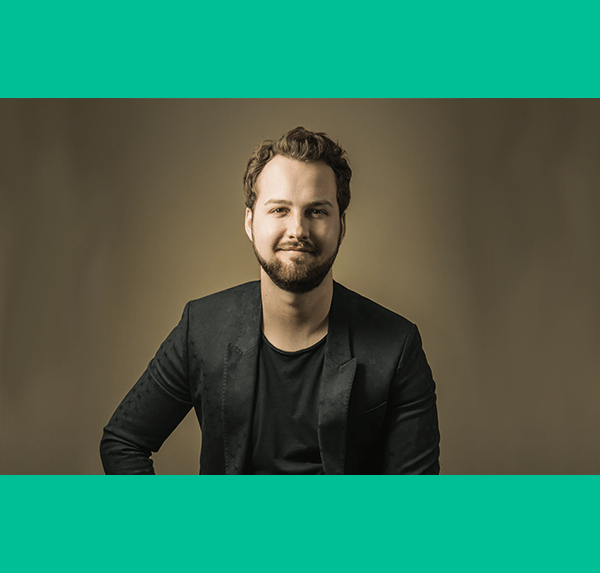Virtual Alumni Reunion: How Diversity and Inclusion are Changing Business
Victoria Williams, Global Corporate Implementation Manager at American Express, spoke to a virtual audience made up of current students and alumni of EU Business School, laying out the foundations for creating a diverse, inclusive, and equitable workplace where employees feel safe enough to be their whole selves.


Victoria has worked in the field of corporate inclusion for over twenty years. While studying for a BA in Political Science and Communications at the University of Arizona, she served as a Minority Student Recruiter, assisting high school students with their college applications and conducting campus tours. After graduating, her first professional role was as a Training and Development Specialist for a Fortune 200 company, where she was initially hired as a trainee as a result of affirmative action. It was here that she first began facilitating Inclusion and Diversity programs for executives, managers, and front line employees.
She first joined American Express in September 2009 as a Learning Specialist. Over the last twelve years, she has progressed through team leadership roles to become their Global Corporate Implementation Manager.
In her address, she discussed the kinds of changes you can make to create a culture of belonging within your own organization. But first, to make sure we’re all on the same page, let’s establish definitions for a couple of important keywords.
Diversity, inclusion, and equity
Diversity is defined by Oxford as “the state of being diverse; the practice or quality of including or involving people from a range of different backgrounds and of different genders, sexual orientations, etc.”
The definition of inclusion from the same source is “the action or state of being included within a group or structure; the practice or policy of providing equal access to opportunities and resources for people who might otherwise be excluded or marginalized, such as those who have physical or mental disabilities and members of other minority groups.”
However, “equal access,” as referred to above, and equitable access are not quite the same things.
Equality means treating everyone the same way, often while assuming that everyone also starts on equal footing, status, rights, or with the same opportunities. On the other hand, being equitable in your practices means recognizing that everyone does not start with the same level of access to opportunities and being intentional about giving everyone what they need to be successful. Strategies that produce equity are targeted to address the unequal needs, conditions, and positions of people and communities created by institutional and structural barriers.


Most companies these days have embraced diversity and inclusion. In the EU, equal opportunity employment laws prevent discrimination based upon the following criteria:
- Age
- Mental ability
- Language
- Native/immigrant
- Gender
- Sexual orientation
- Race
- Marital status
- Physical ability
- Class/caste
- Religion
Victoria believes it’s time to look beyond that, though, to focus on building workplace cultures in which people truly feel they belong. To do that, you will need to develop and implement practices based on diversity, inclusion, and equity. If you only look at the first two, the dominant social group/identity/ideology will still be deferred to during the decision-making process. If you only have the second two, you create a homogenous culture that does not recognize differences, leading to some employees feeling marginalized. So, in order to create an authentic, respectful, and welcoming culture for your organization, you need to pay attention to all three: diversity, inclusion, and equity.
Creating inclusion and belonging through actions & behaviors
Victoria gave some very insightful and practical examples of behaviors you can implement in the workplace to keep yourself and your leaders accountable so that you can really begin to create an inclusive workplace where people feel like they belong. She broke these down into five important actions:
- Listen
- Listen carefully until the person speaking feels understood.
- Be patient and ask questions to show engagement and clarify anything you don’t understand.
- Check with the person to ensure they feel heard.
- Accept
- Ask others to share their thoughts, feelings, and experiences.
- Accept their frame of reference as true for them.
- Communicate
- Communicate clearly, directly, and honestly.
- Acknowledge others without judgment.
- Again, ask questions to clarify for meaning without interrogating.
- Use “I” language instead of “you” to take responsibility for your own feelings/reactions.
- Talk directly to individuals, even in a group setting.
- Make eye contact and be attentive.
- Show care and respect.
- Don’t engage in gossip.
- Don’t feel that your words must always be polished; it’s okay to be “raggedy.”
- Build
- Build on the thoughts, ideas, and feelings of others.
- Show and express caring and respect.
- Refer to the other person by name.
- Explore the impacts and implications of actions and feelings.
- Be brave
- Speak up for what you believe in.
- Support risks taken by others when you have the opportunity.
- Put your stake in the ground – but be willing, eager, and able to move it.
- Use conflict as an opportunity to have courageous conversations that foster learning, creativity, and more effective problem-solving.
- Challenge the speaker whenever you hear offensive and demeaning language or figures of speech.
These behaviors will certainly help you to move further along the continuum of having an inclusive culture. Still, today’s workforce wants to work for a business that truly embraces diversity and inclusion and is looking to make a difference in how they work, how their staff feels, etc.


How can you create and convey an authentic sense of inclusion and belonging within your organization?
- Promote awareness of inclusion and diversity issues.
- Do a root-cause analysis of your organization to understand where you are, and if you have a problem, what is it, and where does it come from? This might involve bringing in a third-party professional to assess your hiring process, for example, or your promotion records. Where do minorities fit within your organization, and at what levels are they represented?
- Ask yourself if you care enough about the problem and the people it harms.
- Decide whether or not you are willing to develop strategies to correct the problem. Are you willing to make sacrifices to take action?
- Eliminate bias in hiring. This involves posting job adverts on several platforms, making the information accessible to all groups, selecting a diverse range of candidates, and arranging panel interviews to mitigate individual biases.
- Eliminate bias in development opportunities. To achieve this, you need to provide on-the-job experiences to develop leadership and operational skills; create networking, cluster mentoring, and sponsorship opportunities; and implement formal training programs.
- Essentially, you have to make cultural changes into a way of life within your organization. Use inclusive behavior and hold regular conversations with employees and affinity groups to see how you can further evolve your practices.
EU Business School is committed to promoting diversity and inclusion within its faculty and student body. Our network represents professionals from 145 different countries. If you are interested in learning from some of the world’s most experienced business leaders in one of Europe’s most diverse cities (choose between our Barcelona, Geneva, Montreux, and Munich campuses or study online), check out our course brochures online today.











